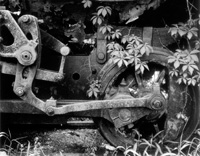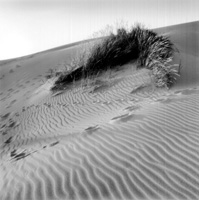In The Spirit
Robert Lindholms Visual Verbal Connection
Words matter. |
|||
Some 20 years ago photographer
Robert Lindholm read in the St. Louis Art Museum some of the writings
of Charles Lindbergh, and the aviator's views on conservation and
the importance of preserving the environment had an immediate appeal.
"I was very impressed by what he'd written," Bob says,
"and by what he observed. Basically he was saying that we need to
fit our use of technology to the natural world, and not overwhelm nature.
Several years later I read more of his work and began to write down certain
quotations." |
|||
In true "six degrees
of separation" fashion, it turned out that the Attorney General's
wife knew one of Charles Lindbergh's granddaughters. Bob got in
touch with her and then with other family members. His idea was to find
images among his work that would complement Lindbergh's words. "Over
the years I've always made sure that what I was doing with the quotations
was in agreement with their thoughts," Bob says. "I always
looked for photographs I'd taken that corresponded to the sentiments
of the writing." It was not in any way an effort to provide a literal
connection. "If he talked about a mountain, I didn't go looking
for a photograph of a mountain. It was all about the spirit of what he
was saying." |
|||
The Result Of His Efforts |
|||
The American Landscape Note: Online
sources for more about Robert Lindholm's photography and projects
include Courtyard Gallery at www.courtyardgallery.com
and the Sternberg Museum of Natural History at www.fhsu.edu/sternberg. |
- Log in or register to post comments






































